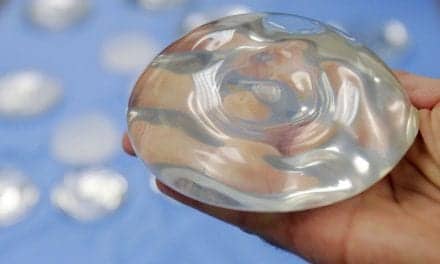“On a scale of 1 to 5, how satisfied are you with the appearance of your breasts?” For nearly 40% of women after breast reconstruction, perceptions are substantially better or worse compared to ratings by third-party observers, concludes a study in the July issue of Plastic and Reconstructive Surgery®, the official medical journal of the American Society of Plastic Surgeons (ASPS).
These “incongruous” ratings of aesthetic results after breast reconstruction are linked to differences in key areas of quality of life (QoL), according to the report by ASPS Member Surgeon Graham S. Schwarz, MD, of the Cleveland Clinic and colleagues. Schwarz comments, “Our findings suggest that women’s perceptions of their aesthetic outcomes may be affected by satisfaction in other areas, such as psychological, physical and sexual well-being.”
New Insights into Varied Patient Satisfaction After Breast Reconstruction
Patient-reported outcomes are the main measure of the success of breast reconstruction after mastectomy for breast cancer. However, women’s perceptions of the outcomes of breast reconstruction vary widely, and may be influenced by psychological, physical, or other factors. Third-party observations by independent raters provide a way of “separating the aesthetic assessment of the breast from the [patient’s] personal, lived experience,” according to the authors.
In the new study, 147 women rated their aesthetic outcomes after breast reconstruction using a validated questionnaire (BREAST-Q), which also assessed QoL factors in several domains. The patients’ ratings were compared to independent ratings by a panel of third-party observers (including plastic surgeons and final-year medical students), based on post-reconstruction photographs using a standard assessment (the Validated Breast Aesthetic Scale, or VBRAS).
For 63% of women, satisfaction with their aesthetic results aligned with the independent ratings. However, 19% of women rated their aesthetic outcomes lower than the third-party observers—for this group, median score for satisfaction with breasts was 3 on a 5-point scale. The remaining 18% of women rated their results higher than the independent raters: median score 4 points out of 5.
When the researchers looked at other BREAST-Q responses, the disparities in aesthetic ratings were related to scores for several areas of QoL. Women with “incongruously high” ratings of breast appearance reported higher levels of psychosocial, physical, and sexual well-being. In contrast, women with “incongruously low” ratings had lower scores in the same three QoL domains.
The mismatches were related not only to the appearance of the breast, but also to satisfaction with the abdomen and overall outcome. In contrast, the incongruous ratings were unrelated to patient factors such as age or body mass index; or to clinical factors such as the type and timing of breast reconstruction or the use of adjuvant treatments (chemotherapy and/or radiation) in addition to mastectomy.
As more women undergo breast reconstruction after mastectomy for breast cancer, there is a growing focus on patient satisfaction and outcomes. In 2020, ASPS Member Surgeons performed more than 138,000 breast reconstruction procedures, according to ASPS statistics.
The study provides new insights into the variation in patient-reported outcomes after breast reconstruction. As in previous studies, “an aesthetically pleasing breast does not guarantee patient satisfaction,” the researchers write. The associations with QoL factors “demonstrate the importance of psychometric characteristics on postoperative satisfaction.”
“Our results impact shared decision-making between patient and physician in the preoperative planning stages,” Schwarz and his coauthors conclude. “Evaluation of a patient with low baseline psychosocial, sexual or physical functioning…may warrant further discussion about expectations of postoperative outcomes.”
He adds, “Our study is unique in our attempts to use two validated instruments—the BREAST-Q AND VBRAS—to explore this gap in perception between breast reconstruction patients and third parties. We also hope our approach opens up a new avenue to study disparity in perception across many plastic surgery procedures.”




